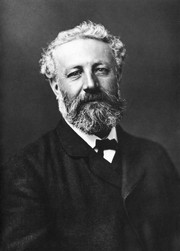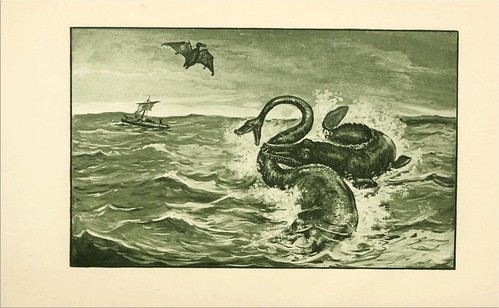“The expander of horizons,” is what a noted critic called Jules Verne. He was the prophet, the foreseer and foreteller of our great mechanical age.”1
 Jules Verne, one of the “fathers of science fiction,” was born today, back in 1828. He wrote several hundred tales about travels to exotic locales in incredible machines. Science fiction’s other father is Englishman H. G. Wells, born about 40 years later. Apparently, Verne is also one of the most translated author in history, second only to Agatha Christie in his global reach2.
Jules Verne, one of the “fathers of science fiction,” was born today, back in 1828. He wrote several hundred tales about travels to exotic locales in incredible machines. Science fiction’s other father is Englishman H. G. Wells, born about 40 years later. Apparently, Verne is also one of the most translated author in history, second only to Agatha Christie in his global reach2.
The opening paragraphs of one of his most famous stories, 20,000 Leagues Under the Seas, will give you a hint:
The year 1866 was signalized by a remarkable incident, a mysterious and inexplicable phenomenon, which doubtless no one has yet forgotten. Not to mention rumors which agitated the maritime population, and excited the public mind, even in the interior of continents, seafaring men were particularly excited. Merchants, commons sailors, captains of vessels, skippers, both of Europe and America, naval officers of all countries, and the governments of several states on the two continents, were deeply interested in the matter.
For some time past, vessels had been met by “an enormous thing,” a long object, spindle-shaped, occasionally phosphorescent, and infinitely larger and more rapid and its movements than a whale. Read on?
After poking around the library a little, I found the 1900 Hetzel edition of Voyage au Centre de la Terre full of gorgeous illustrations. I also uncovered a few scanned volumes of the complete Works of Jules Verne, in particular Volume 1, Volume 2 and Volume 4. (There may be more available online… In the 1911 edition, I see that 15 volumes were published originally, in 600 numbered copies.)
Update: Feb 19, 2010 – Spotted these gorgeous cover designs by Jim Tierney over on Vimeo:
Jules Verne cover designs by Jim Tierney from Jim Tierney on Vimeo.
]]>
Jules Verne cover designs by Jim Tierney from Jim Tierney on Vimeo.

